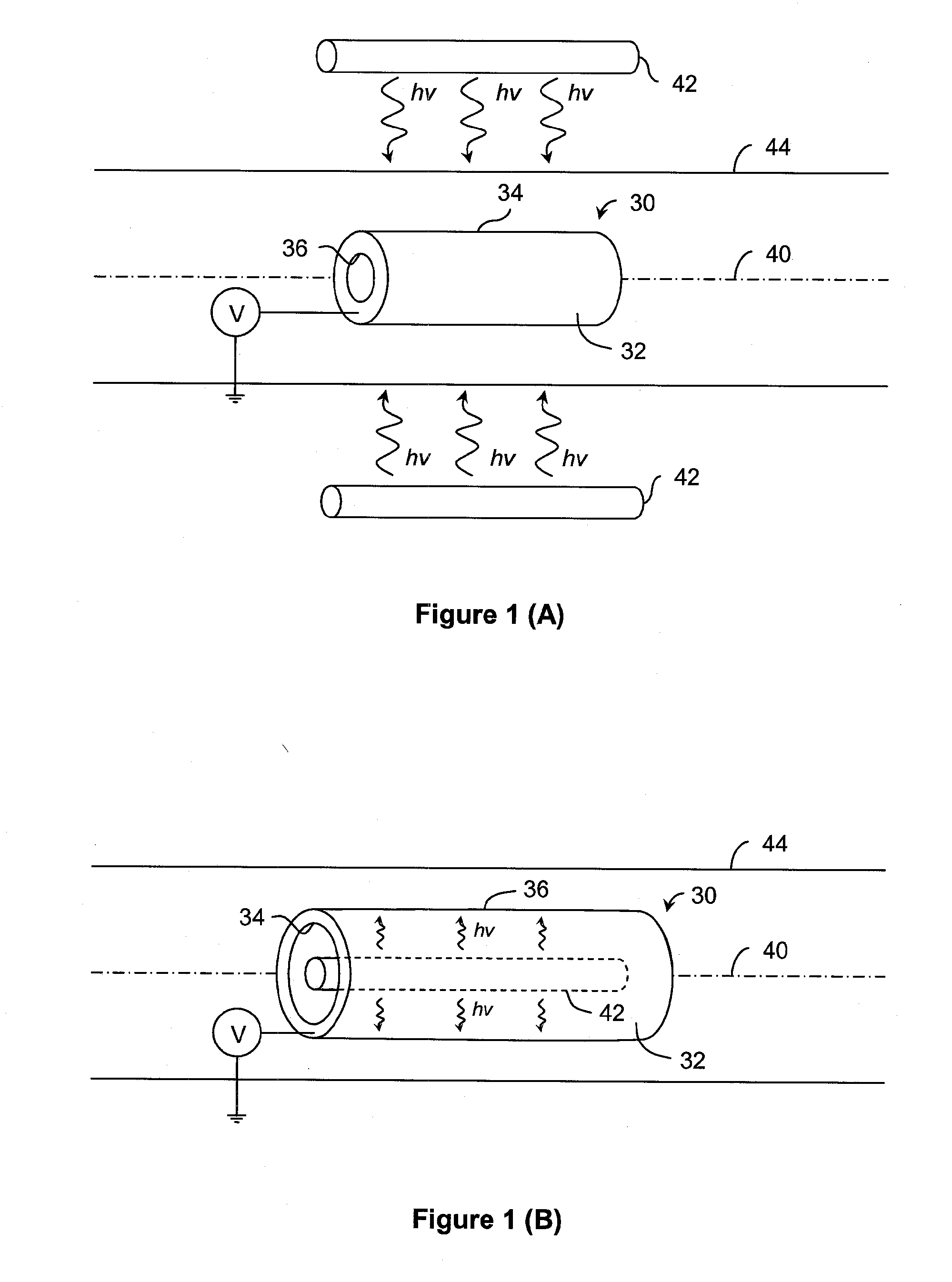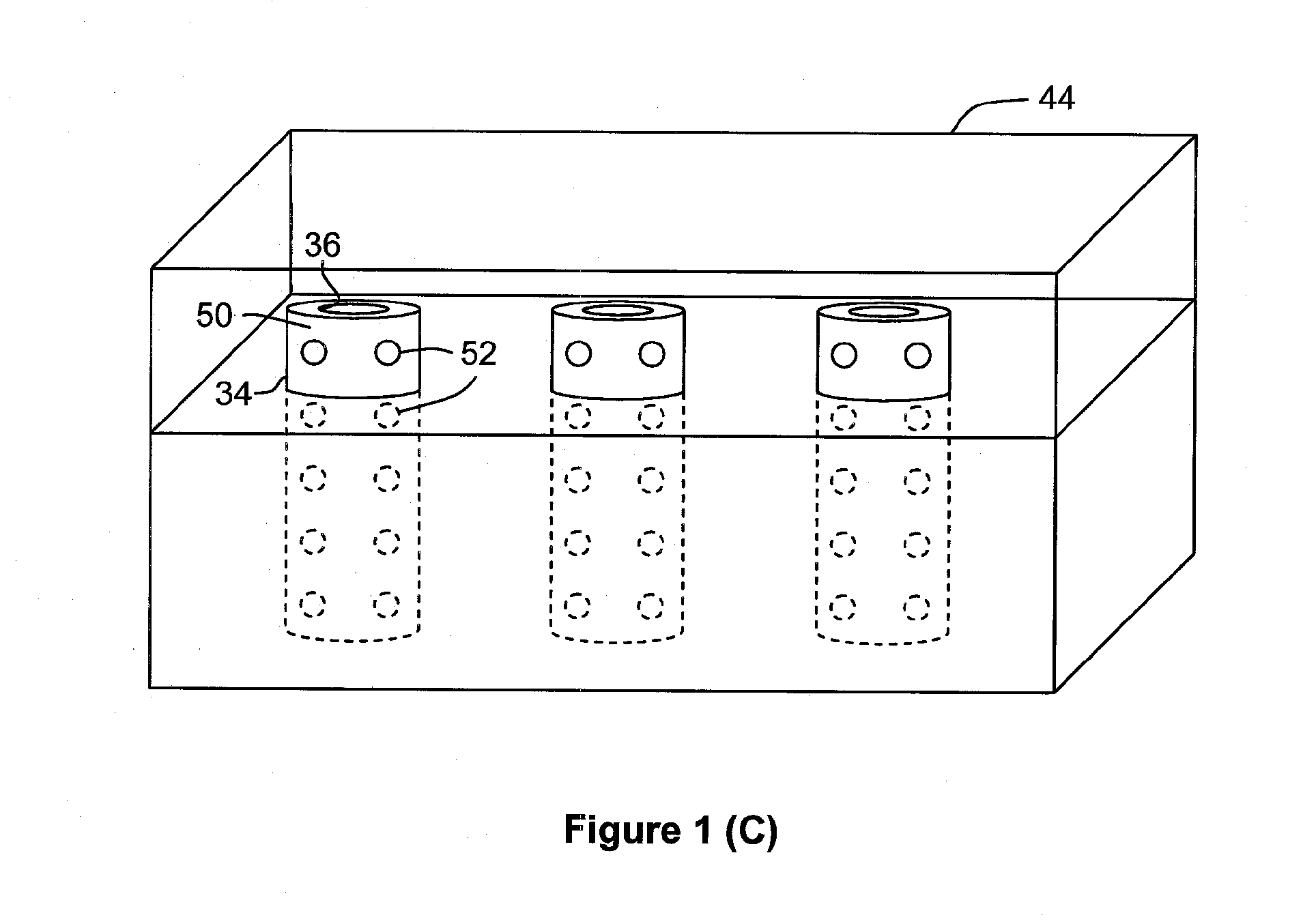Method and system for combined photocatalytic and electrochemical wastewater remediation
a wastewater treatment and electrochemical technology, applied in water treatment compounds, water/sludge/sewage treatment, electrochemicals, etc., can solve the problems of inconvenient practical application of photocatalytic treatment of wastewater, affecting the efficiency of photocatalytic treatment, so as to achieve the effect of effectively driving the electrochemical oxidation of pollutants and enhancing the performance of tio2 photocatalys
- Summary
- Abstract
- Description
- Claims
- Application Information
AI Technical Summary
Benefits of technology
Problems solved by technology
Method used
Image
Examples
example
Experimental Section Materials.
[0065]2-NPh, 4-NPh (Aldrich) and sodium hydroxide (Anachemia) were used as received. Pure water (18 MΩcm) was obtained from a Nanopure Diamond® water purification system. Ti(OBu)4, IrCl3.3H2O (Pressure Chemical Corp.) and TaCl5 (Aldrich) were used to prepare precursor solutions for the synthesis of the photocatalyst and electrocatalyst.
Electrode Preparation and Characterization.
[0066]The TiO2 / Ti / Ta2O5—IrO2 bifunctional electrodes were prepared using thermal decomposition technique. Pure titanium plates of 1.0×12.5×8 mm were first degreased by sonication in acetone for 10 min, then washed with pure water, etched in 18% HCl at 85° C. for 15 min, then completely washed with pure water and finally dried in a vacuum oven at 40° C. The TiO2 precursor solution was prepared by adding 1.56 ml of Ti(OBu)4 to 13.41 ml of butanol. The Ta2O5—IrO2 precursor solution was made by mixing the iridium precursor solution (dissolving 0.30 g of IrCl3.3H2O in 2.5 ml of ethan...
PUM
| Property | Measurement | Unit |
|---|---|---|
| Bias potential | aaaaa | aaaaa |
| Thickness | aaaaa | aaaaa |
| Flexibility | aaaaa | aaaaa |
Abstract
Description
Claims
Application Information
 Login to View More
Login to View More - R&D
- Intellectual Property
- Life Sciences
- Materials
- Tech Scout
- Unparalleled Data Quality
- Higher Quality Content
- 60% Fewer Hallucinations
Browse by: Latest US Patents, China's latest patents, Technical Efficacy Thesaurus, Application Domain, Technology Topic, Popular Technical Reports.
© 2025 PatSnap. All rights reserved.Legal|Privacy policy|Modern Slavery Act Transparency Statement|Sitemap|About US| Contact US: help@patsnap.com



